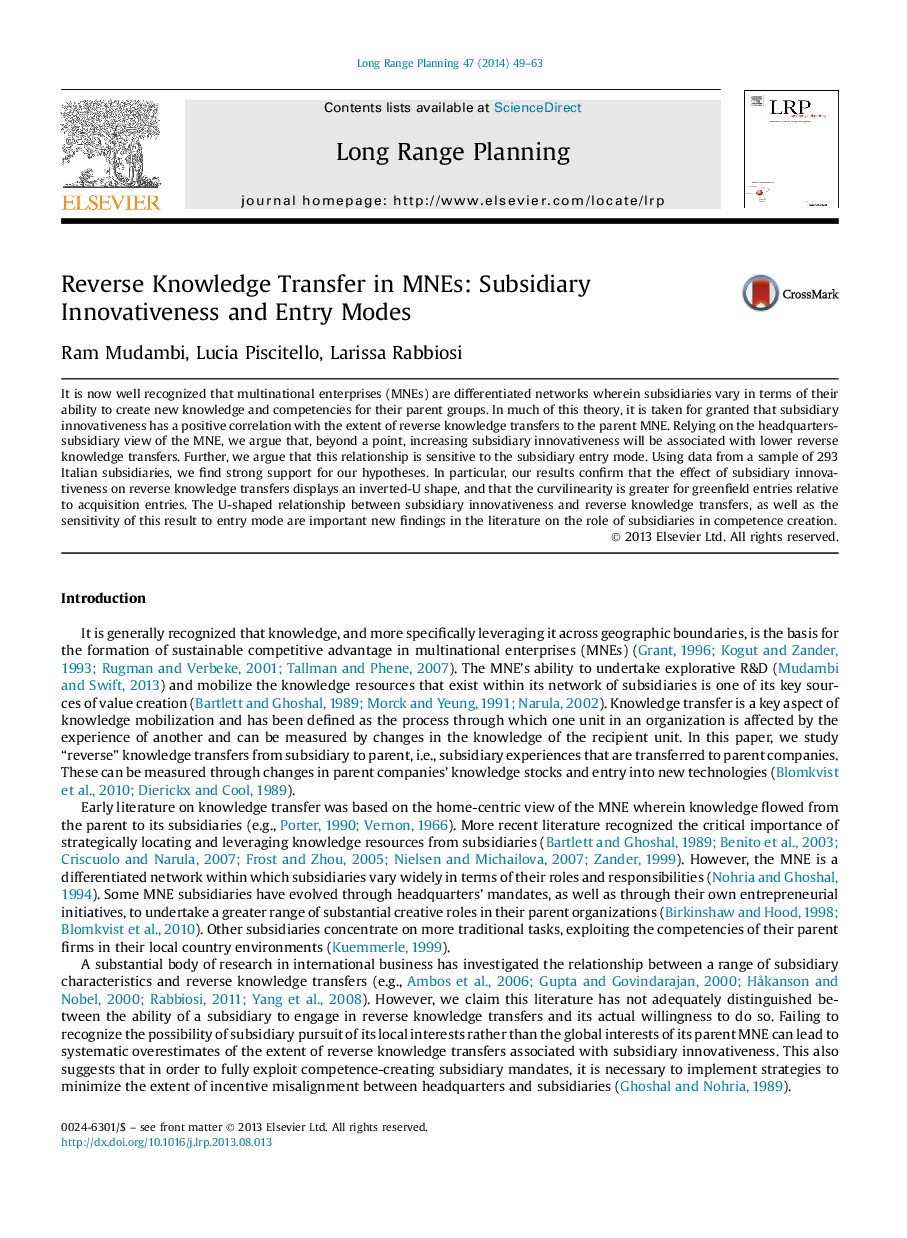| Article ID | Journal | Published Year | Pages | File Type |
|---|---|---|---|---|
| 7426933 | Long Range Planning | 2014 | 15 Pages |
Abstract
It is now well recognized that multinational enterprises (MNEs) are differentiated networks wherein subsidiaries vary in terms of their ability to create new knowledge and competencies for their parent groups. In much of this theory, it is taken for granted that subsidiary innovativeness has a positive correlation with the extent of reverse knowledge transfers to the parent MNE. Relying on the headquarters-subsidiary view of the MNE, we argue that, beyond a point, increasing subsidiary innovativeness will be associated with lower reverse knowledge transfers. Further, we argue that this relationship is sensitive to the subsidiary entry mode. Using data from a sample of 293 Italian subsidiaries, we find strong support for our hypotheses. In particular, our results confirm that the effect of subsidiary innovativeness on reverse knowledge transfers displays an inverted-U shape, and that the curvilinearity is greater for greenfield entries relative to acquisition entries. The U-shaped relationship between subsidiary innovativeness and reverse knowledge transfers, as well as the sensitivity of this result to entry mode are important new findings in the literature on the role of subsidiaries in competence creation.
Related Topics
Social Sciences and Humanities
Business, Management and Accounting
Business and International Management
Authors
Ram Mudambi, Lucia Piscitello, Larissa Rabbiosi,
